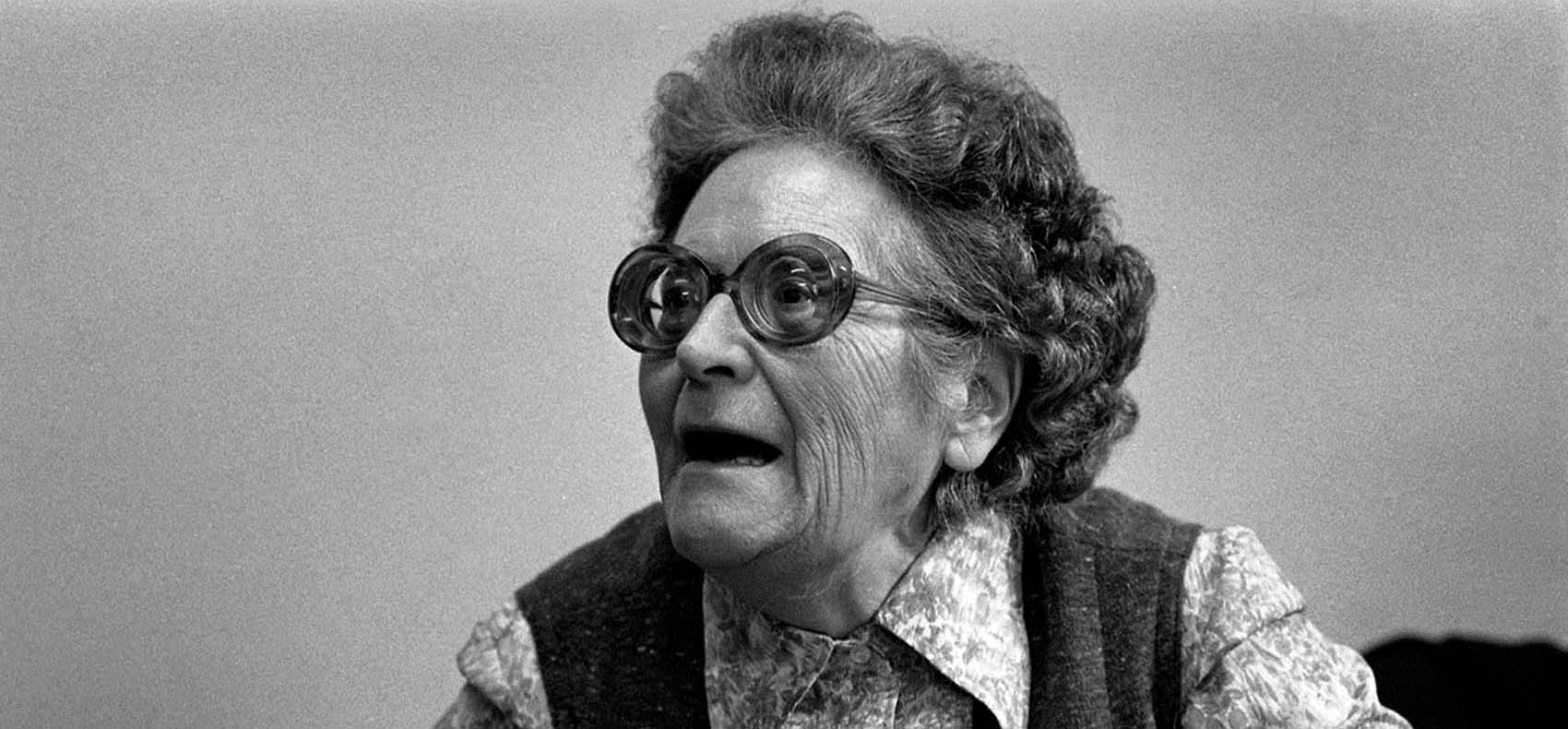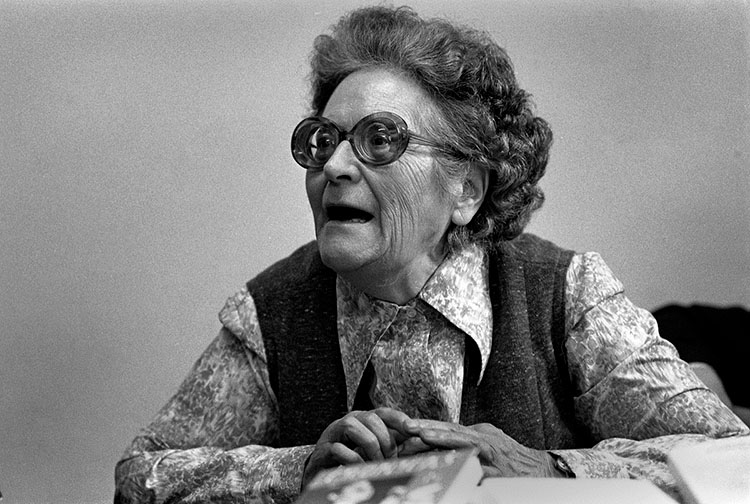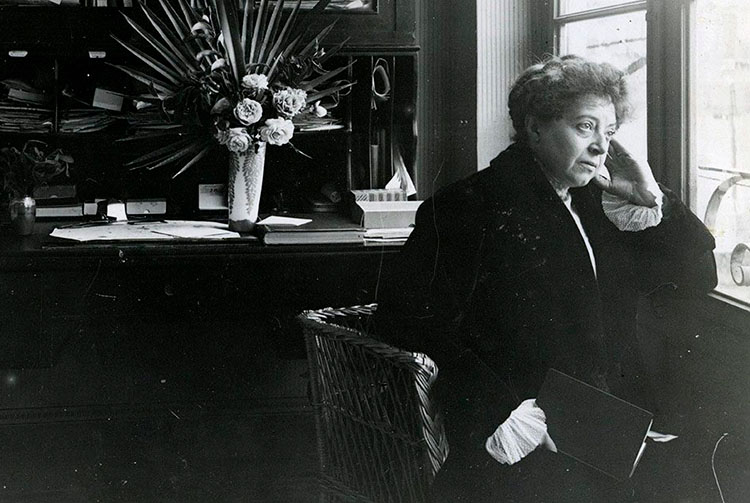

Frederica Montseny, an anarchist minister
Equality between women and men is not only achieved through universal suffrage. Full equality lies in changing the deepest structures of patriarchal society. We must work for a society that reflects a true relationship between equals. We continue with the historical exercise proposed by Oriol Garcia Farré, 11Onze agent and historian, on great female figures of our contemporary history, in this case the anarchist leader Frederica Montseny.
At the beginning of the 19th century, Catalonia embarked on the road to modernity through the process of industrialisation. The mechanisation of the textile industry and the structuring of the territory, with the construction of the railway and road network, enabled the country to become one of the most dynamic economies in Europe.
The capitalism that emerged from this process generated great profits for the few at the expense of great social imbalances. Inevitably, the workers’ movement emerged, forcing the better-off classes to reflect on whether it was permissible to make steady profits without a fair distribution of wealth. Then came the key question: is class struggle inevitable?
History has seen countless theorists address the question over the past centuries. Many have theorised and legitimised workers’ wills against bourgeois labour exploitation. And countless trade union movements have worked to liberate the worker from the oppression of the boss.
Competing interests
The class struggle has led the workers to use the right to strike and, as a last resort, physical confrontation to achieve their demands. And the bourgeoisie, supported by the power of surplus value, has been able to put pressure on public institutions to counteract the legitimate demands of the workers. When this understanding has been impossible, war and concentration camps have appeared.
The dialectic of revolutionary strategies for the abolition of capitalism and the processes of achieving an egalitarian society – which would also mean the end of the oppression of women – became the workhorse of radical feminism in the early part of the 20th century.
Many believed that, in order to eliminate gender inequality, it was first necessary to fight to end social classes, the patriarchy and the Church. After all this, the real emancipation of women would be achieved. Universal women’s suffrage would not be enough, just a progressive illusion to control their voice. Therefore, for the anarcho-feminists, it was necessary to go much further: would it be the dictatorship of the proletariat which would bring full equality of both genders? In this process, would it also be necessary to destroy the state, the symbol of bourgeois control?
A libertarian leader
No one would ever have imagined that an anarchist leader like Frederica Montseny i Mañé (1905-1994) would go so far. The only child of a married couple who were militant in the incipient libertarian ideas, she forged her revolutionary character at a very early age. The acquisition of knowledge, through her mother’s side of the family, imbued her with a strong sense of freedom, which shaped her character as a woman.
Frederica Montseny understood that the class struggle was the necessary path to achieve full individual freedom, the power of decision and the choice of a way of life. All this would shape the essence of the individual within society. And in this process of liberation, for both women and men, the acquisition of knowledge would be of vital importance.
This anarchist leader understands that women have to live in absolute freedom and that there must be a perfect balance between women and men. Her frame of mind was therefore far from the feminine “I” as a complement to the masculine “you” that prevailed at the time, which led her into exile from January 1939 onwards.
She soon stood out for her flair for writing, so she began to collaborate in the anarchist press and eventually joined the Confederación Sindical de los Trabajadores (CNT). Both ‘La Revista Blanca’, the theoretical organ of Spanish anarchism, and the more satirical newspaper ‘El luchador’ became excellent loudspeakers for disseminating her anarchist thought: between 1923 and 1936 Frederica Montseny wrote more than 600 articles.
An anarchist in government
History had an enormous challenge in store for her, one of those that place you in front of a major existential dilemma. A few months after the outbreak of the Civil War, the trade unionist Francisco Largo Caballero formed a government of national unity, in which all the progressive and revolutionary forces that made up the political landscape of the state had to be represented. His government was to include republicans, liberals and members of the PSOE, the PCE, the POUM and also the CNT.
Frederica Montseny thus became the first woman in the history of Spain to hold a ministerial post, as was the portfolio of Health and Social Welfare. The decision had not been an easy one because of her ideology and the pressure from the most purist sector of anarchism, which demanded that she resign from the post.
Stubbornness and the timeliness of the situation led Montseny to push through the first decree legalising abortion. This was a fifty-year advance on women’s right to decide about their own bodies.
Forced exile
However, everything came to a halt with the triumph of fascism in Spain. In French exile she encountered Nazi fascism, which nearly ended her life. She lived in France until 1977, when she returned to rebuild the anarchist trade union and continue the work interrupted in 1939. The world had changed, however, and the revolution had been pushed aside by the welfare state.
Frederica Montseny was one of the first voices to establish a direct correlation between women’s liberation and libertarian ideas. She never considered herself a feminist, although her theses have ended up forming part of the ideological body of contemporary feminism.
11Onze is the community fintech of Catalonia. Open an account by downloading the super app El Canut for Android or iOS and join the revolution!
Leave a Reply
You must be logged in to post a comment.






El 2 de juliol de 1.977 vaig ser al primer míting de CNT després de la dictadura. Va parlar la Frederica Montseny, acabada d’arribar de l’exili, a més d’en Josep Peirats, en Juan Gómez Casas i l’Enric Marcos, secretari general de CNT a Catalunya. Erem més de 100.000 persones i l’establishment va començar a adonar-se que el moviment anarquista no solament no havia mort amb el franquisme, sinó que tornava a aglutinar moltíssima gent –la CNT tenia 300.000 afiliats–, un cop mort el criminal.
Solució? Un atemptat de falsa bandera (cas Scala, l’any següent), infiltrats, guerra bruta judicial i repressió, que va contribuir a debilitar el moviment anarquista a casa nostra. Quants paral·lelismes amb el procés independentista, oi?
Avui en dia, encara hi ha material del cas Scala que no pot ser consultat, perquè és informació reservada per a l’estat espanyol.
Totalment d’acord, Albert! Cal aprendre del passat per no caure en els mateixos paranys! L’estat del benestar va ser una de les eines per adormir la revolució. Què passarà quan arribi la recessió? No ho sabem, però hem d’estar preparats. Moltes gràcies pel teu comentari. Seguim a La Plaça!
Molt interessant
Gràcies, Manel per seguir-nos i llegir-nos. Seguim a La Plaça.
Celebrem que t’hagi agradat i que ho trobis interessant. Moltes gràcies pel teu comentari, Manel!!!